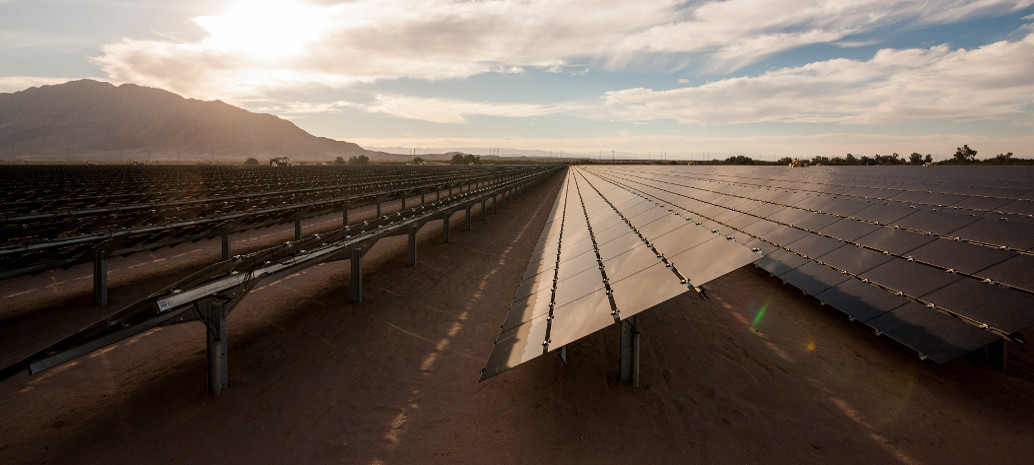For a company in the midst of a major re-tooling and reorganization of its business model, First Solar brought in remarkably strong financial results during Q1 2017. The company has already shut down 12 of its thin-film module manufacturing lines, four in Ohio and eight in Malaysia, but still managed a 2% year-over-year increase in revenue to $892 million, a net income of $9.7 million, and brought in $493 million in cash.
Of course, much of this was due to taking the large majority of impairments – $821 million in total – during Q4 of last year, and only taking an $8 million impairment loss in Q1. Greater than anticipated revenue from the sale of First Solar’s Moapa project in Nevada didn’t hurt any, and it is less clear when exactly when First Solar is going to be shelling out the roughly one billion dollars that it will take to retool to its large format Series 6.
Q1 saw First Solar in the middle of this transition, and during the quarter ordered tools for Series 6 lines in both Ohio and Malaysia. The company plans to install this equipment beginning in Q3 2017 in Ohio, and to roll out the first commercial shipments of Series 6 during Q2 2018.
During the quarter First Solar deployed prototype Series 6 modules at a site in Arizona, and stated that it has already achieved lower install hours per megawatt than crystalline silicon (c-Si) modules, with initial 3rd party construction contractor quotes showing a total balance of systems (BOS) costs similar to c-Si.
The company notes that it is soliciting feedback from construction contractors, structure providers and independent engineers, and has received and independent assessment of the electrical BOS profile. These are important considerations for First Solar, which has lamented the BOS disadvantage of its Series 4 modules, which are much smaller than conventional c-Si PV modules.
However, Series 4 production continues. First Solar pumped out 712 MW of modules during the quarter, only a 6% fall from the previous quarter. Part of this is aided by the company’s ongoing efficiency increases, with its average module efficiency rising to 16.7%.
During Q1 First Solar shipped 400 MW of modules, booked 500 MW, and expects to ship around 2.5 GW this year. The company currently has 1.5 GW of bookings for Series 4, and plans to only have 1.7 to 1.9 GW of Series 4 after these orders are filled.
As part of the emphasis on Series 6 First Solar has dialed back both its project development and construction activities, and among its 1.5 GW of bookings for Series 4 only 200 MW are going to internal projects.
First Solar is also planning to withdraw from yieldco 8point3 Energy Partners, which it jointly sponsors with SunPower. This could provide additional cash for the company, and First Solar notes that the switch to Series 6 is “very capital intensive”.
Despite these moves, First Solar CEO Mark Widmar was sure to stress that “development remains a core part of our strategy”, and that the company will continue to develop projects where it makes the most sense.
First Solar also notes that it is beginning to sell some of the projects it builds before completion, stating that it can get better value this way, as well as recycling capital more effectively.
And while this may be prudent, if any solar manufacturer is well bankrolled for the kind of massive shift that a move to larger format represents, it is First Solar. At the end of Q1 First Solar was sitting on more than $2.4 billion in cash, and expects to still have $1.5 to 1.7 billion at the end of 2017.
First Solar has also improved its 2017 guidance, with its expected revenues rising by around $50 million to a mid-point of $2.9 billion. The company has also shifted its operating income range to a presumption of thin profitability instead of loss, despite $525 to $625 million in capital expenditures.
This content is protected by copyright and may not be reused. If you want to cooperate with us and would like to reuse some of our content, please contact: editors@pv-magazine.com.









By submitting this form you agree to pv magazine using your data for the purposes of publishing your comment.
Your personal data will only be disclosed or otherwise transmitted to third parties for the purposes of spam filtering or if this is necessary for technical maintenance of the website. Any other transfer to third parties will not take place unless this is justified on the basis of applicable data protection regulations or if pv magazine is legally obliged to do so.
You may revoke this consent at any time with effect for the future, in which case your personal data will be deleted immediately. Otherwise, your data will be deleted if pv magazine has processed your request or the purpose of data storage is fulfilled.
Further information on data privacy can be found in our Data Protection Policy.